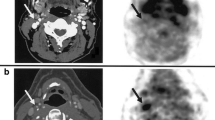Abstract
The goal of molecular imaging is to detect pathologic biomarkers, which can lead to early recognition of diseases, better therapeutic management, and improved monitoring for recurrence. MRI is a particularly attractive method for molecular imaging applications, due to its noninvasive nature, outstanding signal to noise ratio, high spatial resolution, exceptional tissue contrast, and short imaging times. Site-specific MRI contrast agents have been developed to target biologic processes that occur early in the development of atherosclerotic plaques, including angiogenesis and lipid accumulation, or biosignatures that appear later, such as fibrin and tissue factor resulting from plaque rupture. Moreover, targeted contrast agents can also serve as drug delivery vehicles, combining diagnosis and therapy. If ultimately successful, these emerging molecular imaging agents and techniques will allow early disease recognition and quantification prompting therapeutic intervention before serious sequelae ensue.
Similar content being viewed by others
References and Recommended Reading
Naghavi M, Libby P, Falk E, et al.: From vulnerable plaque to vulnerable patient: a call for new definitions and risk assessment strategies: Part I. Circulation 2003, 108:1664–1672.
Lanza GM, Wallace KD, Scott MJ, et al.: A novel site-targeted ultrasonic contrast agent with broad biomedical application. Circulation 1996, 94:3334–3340.
Morawski AM, Winter PM, Crowder KC, et al.: Targeted nanoparticles for quantitative imaging of sparse molecular epitopes with MRI. Magn Reson Med 2004, 51:480–486.
Delikatny EJ, Poptani H: MR techniques for in vivo molecular and cellular imaging. Radiol Clin North Am 2005, 43:205–220.
Mikawa M, Kato H, Okumura M, et al.: Paramagnetic water-soluble metallofullerenes having the highest relaxivity for MRI contrast agents. Bioconjug Chem 2001, 12:510–514.
Winter PM, Caruthers SD, Yu X, et al.: Improved molecular imaging contrast agent for detection of human thrombus. Magn Reson Med 2003, 50:411–416.
Tenaglia AN, Peters KG, Sketch MH, Jr., Annex BH: Neovascularization in atherectomy specimens from patients with unstable angina: implications for pathogenesis of unstable angina. Am Heart J 1998, 135:10–14.
Zhang Y, Cliff WJ, Schoe GI, Higgins G: Immunohistochemical study of intimal microvessels in coronary atherosclerosis. Am J Pathol 1993, 143:164–172.
Fay WP: Plasminogen activator inhibitor 1, fibrin, and the vascular response to injury. Trends Cardiovasc Med 2004, 14:196–202.
Constantinides P: Plaque assuring in human coronary thrombosis. J Atheroscler Res 1966, 6:1–17.
Kerr JS, Mousa SA, Slee AM: Alpha(v)beta(3) integrin in angiogenesis and restenosis. Drug News Perspect 2001, 14:143–150.
Bishop GG, McPherson JA, Sanders JM, et al.: Selective alpha(v)beta(3)-receptor blockade reduces macrophage infiltration and restenosis after balloon angioplasty in the atherosclerotic rabbit. Circulation 2001, 103:1906–1911.
Corjay MH, Diamond SM, Schlingmann KL, et al.: alphavbeta3, alphavbeta5, and osteopontin are coordinately upregulated at early time points in a rabbit model of neointima formation. J Cell Biochem 1999, 75:492–504.
Wickline SA, Lanza GM: Nanotechnology for molecular imaging and targeted therapy. Circulation 2003, 107:1092–1095.
Winter PM, Morawski AM, Caruthers SD, et al.: Molecular imaging of angiogenesis in early-stage atherosclerosis with alpha(v)beta3-integrin-targeted nanoparticles. Circulation 2003, 108:2270–2274. Demonstrates molecular imaging of angiogenesis in atherosclerosis with paramagnetic perfluorocarbon nanoparticles.
Mitsumori LM, Ricks JL, Rosenfeld ME, et al.: Development of a lipoprotein based molecular imaging MR contrast agent for the noninvasive detection of early atherosclerotic disease. Int J Cardiovasc Imaging 2004, 20:561–567.
Frias JC, Williams KJ, Fisher EA, Fayad ZA: Recombinant HDL-like nanoparticles: a specific contrast agent for MRI of atherosclerotic plaques. J Am Chem Soc 2004, 126:16316–16317.
Ojio S, Takatsu H, Tanaka T, et al.: Considerable time from the onset of plaque rupture and/or thrombi until the onset of acute myocardial infarction in humans: coronary angiographic findings within 1 week before the onset of infarction. Circulation 2000, 102:2063–2069.
Yu X, Song S-K, Chen J, et al.: High-resolution MRI characterization of human thrombus using a novel fibrin-targeted paramagnetic nanoparticle contrast agent. Magn Reson Med 2000, 44:867–872.
Flacke S, Fischer S, Scott MJ, et al.: Novel MRI contrast agent for molecular imaging of fibrin: implications for detecting vulnerable plaques. Circulation 2001, 104:1280–1285. Demonstrates in vivo imaging of fibrin with paramagnetic perfluorocarbon nanoparticles.
Winter PM, Shukla HP, Caruthers SD, et al.: Molecular imaging of human thrombus with computed tomography. Acad Radiol 2005, 12(Suppl 1):S9-S13.
Sirol M, Aguinaldo JG, Graham PB, et al.: Fibrin-targeted contrast agent for improvement of in vivo acute thrombus detection with magnetic resonance imaging. Atherosclerosis 2005, 182:79–85.
Lanza GM, Yu X, Winter PM, et al.: Targeted antiproliferative drug delivery to vascular smooth muscle cells with a magnetic resonance imaging nanoparticle contrast agent: implications for rational therapy of restenosis. Circulation 2002, 106:2842–2847. First demonstration of targeted drug delivery utilizing contactfacilitated lipid exchange.
Author information
Authors and Affiliations
Corresponding author
Rights and permissions
About this article
Cite this article
Winter, P.M., Caruthers, S.D., Wickline, S.A. et al. Molecular imaging by MRI. Curr Cardiol Rep 8, 65–69 (2006). https://doi.org/10.1007/s11886-006-0013-2
Issue Date:
DOI: https://doi.org/10.1007/s11886-006-0013-2




